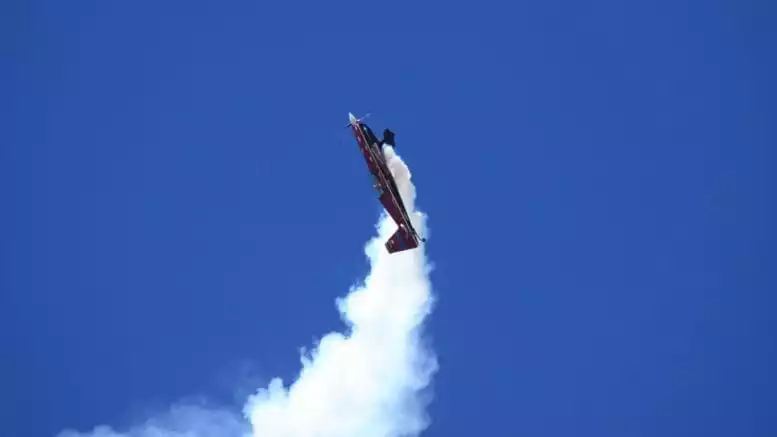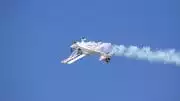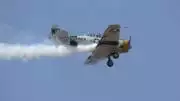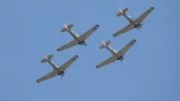How Does Airplane Weight and Balance Affect Tricks?
Airplane weight and balance is an important consideration to every flight, but how does it affect the planes ability to perform tricks?
Weight and balance affects every flight which leaves the ground, from the smallest ultralight aircraft to the most passenger-packed 787 or loaded military airlift. Appreciating the feats of airshow pilots brings a new understanding of weight and balance, not to mention the pilots’ particular understanding and seeming defiance of it.
But is it really defiance? A better word is “respect.” Airshow pilots work along the edges of airplane weight and balance; their work reflects an intricate understanding of how their aircraft will work with its center of gravity. They must not only think about weight and balance within the realm of understanding how their airplane will fly straight up and down, but vertically, at the tops of loops, and even upside down.
What is Airplane Weight and Balance?
First, it’s important to understand what weight and balance is. This is one of the most important aspects of safe flying a student pilot will learn. Calculating weight and balance not only enables their airplane to leave the ground, but to cruise efficiently and land without incident. No matter if the pilot is flying nonstop transcontinental or simply taking a short flight around the airport pattern, weight and balance is an inescapable part of life.
Passengers on small regional jets or turboprop airplanes may have been asked to relocate from the front or back of the airplane. The technical reason is safe allocation of airplane weight and balance. Think of the airplane’s center of gravity as a fulcrum, as on a teeter totter. Gravity applies more force the further it is from the center of the fulcrum. This greatly affects the performance of the airplane.
And when a pilot is undertaking air show tricks, airplane performance becomes all the more important. When the weight is distributed too far towards the nose, it is more difficult to pull the stick back. If there’s too much weight located towards the back of the airplane, it’s tough to recover from stalls. Under normal takeoffs, landings, and cruise, this is a constant concern.
Fuel
Aerobatic airplanes typically are not designed to fly long distances. While pilots sometimes fly them from place to place during airshow season, aerobatic airplanes weren’t engineered with long range in mind. Instead, their structure is for maximum maneuverability and nimbleness. Like military jet fighters ferried to a midpoint in the ocean by an aircraft carrier, aerobatic airplanes at times must depend on other forms of transportation to reach a show location or their own home hangars. Sometimes this involves securing the airplane on the back of a trailer. Given the economics of airshow flying, is not unheard of for airshow pilots to truck their own airplanes from place to place.
An aircraft’s POH limitations means a pilot can only load in so much fuel, depending on how much weight is on board in addition to the aircraft’s own “empty” weight. In smaller airplanes, such as aerobatic ones, more weight on board dictates a lower amount of gas. Temperature and altitude also comes into play. For example, if a large airplane which is carrying several people and a great deal of luggage is attempting to leave a mountainous area, they might have trouble taking off in the summer months, because intense heat affects the amount of fuel which can be loaded. In high altitudes, it’s not easy to take off in such “thin” air, especially if a steep climb at the end of the runway is necessary.
Fuel and Airshow Pilots
These factors concern affect air show pilots differently. While considering the altitude, temperature, and other factors, the weight does not usually change much. Air show pilots are almost never bringing their luggage with them in the air to do a show. Normally they are only concerned with their own weight and that of the airplane’s, and in rare cases, another member of the act. They focus on lightness and speed, and they usually don’t stray far from the pattern of the air show, which usually takes place at an airport, close to a fuel source. Therefore, aerobatic airplanes tend to balance multiple smaller gas tanks across the wings, which, depending on conditions, they may or may not completely fill.
Weight, Balance, and Aerobatics
Every airplane, aerobatic nor not, comes with an aircraft flight manual, which guides each pilot in preparing and aviating the airplane safely. This acronymized as the AFM. In its standardized format, the AFM is known as the Pilot’s Operating Handbook, or the POH. The POH, which in most modern aircraft also functions as its Federal Aviation Administration (FAA)’s approved flight manual, fully discusses the limitations and handling of an aircraft, as well as its performance standards and details about its weight and balance. The data within is the airshow pilot’s secret to landing and taking off safely. It directs which tricks an aerobatic airplane can safely undertake.
Weight, Balance, and Speed
Taking part in such aerobatic tricks as loops, steep turns, and spins means that the pilot must pay special attention to airspeed limitations such as maximum structural cruising speed, maneuvering speed, and “never exceed” speed. Such important aspects of airplane weight and balance apply to speed control. Tricks involving sudden shifts of speed and “high loads” may not be available due to the weight distribution and structural integrity of the airplane. For example, some airshow feats involve sudden dives towards the ground. Good aerobatic pilots are aware that the speed of the aircraft increases when the nose is down and the full weight of the airplane follows. Such “weight-forward” attitudes can quickly push the airplane past its balanced “never exceed speed.”
While some aerobatic airplanes can withstand sudden changes in direction, others cannot. Becoming familiar with flight load factors and maximum entry speeds is vital for even deliberate stalls, slow rolls, and slow flight. As mentioned above, the ambient temperature, altitude, and total weight of the airplane might mean that a trick performed in New Orleans (at or below sea level) might not be possible in Colorado Springs (6,035 feet above sea level.)
Ready to Soar with Us?







